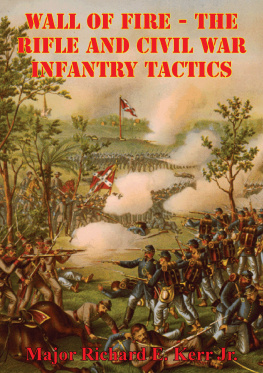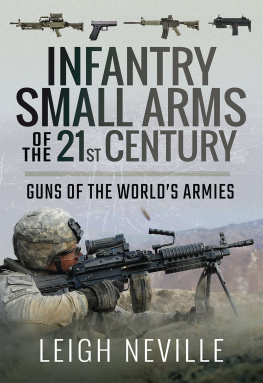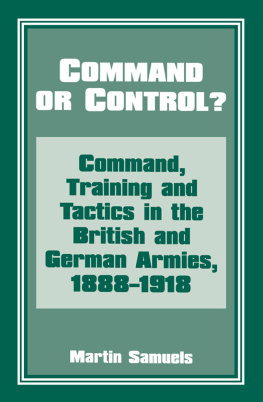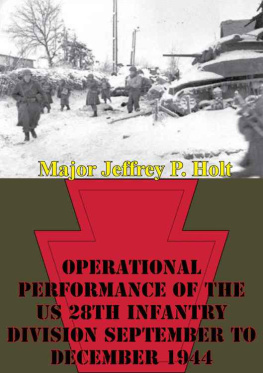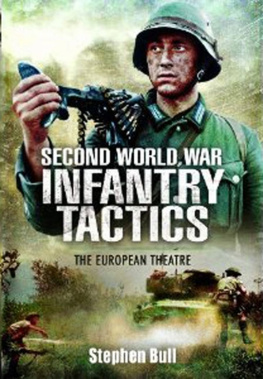From Flintlock to Rifle
OTHER BOOKS BY STEVEN T. ROSS:
American War Plans, 19451950
European Diplomatic History, 17891815
The French Revolution: Conflict or Continuity?
Quest for Victory: French Military Strategy, 17921799
From Flintlock to Rifle
Infantry Tactics, 17401866
Steven T. Ross
Professor: Strategy and Policy Department,
Naval War College, Newport, Rhode Island
FRANK CASS
LONDON
First published in the United States of America in 1979 by
Associated University Presses, Inc., Cranbury, NJ 08512
This edition first published in 1996 in Great Britain by
FRANK CASS & CO. LTD
2 Park Square, Milton Park, Abingdon,
Oxon, OX14 4RN
and in the United States of America by
FRANK CASS
270 Madison Ave, New York NY 10016
Transferred to Digital Printing 2005
Copyright 1979 Steven T. Ross
Introduction to Second Edition 1996 Steven T. Ross
British Library Cataloguing in Publication Data
Ross, Steven T.
From Flintlock to Rifle: Infantry Tactics,
17401866. 2Rev.ed
I. Title
356.18309
ISBN 0-7146-4602-4 (cloth)
ISBN 0-7146-4193-6 (paper)
Library of Congress Cataloging-in-Publication Data
Ross, Steven T.
From flintlock to rifle : infantry tactics, 17401866 / Steven T. Ross.
p. cm.
Includes bibliographical references and index.
ISBN 0-7146-4602-4 (cloth). ISBN 0-7146-4193-6 (paper)
1. Infantry drill and tacticsHistory18th century. 2. Infantry drill and tacticsHistory19th century. 3. Napoleonic Wars, 18001815Campaigns. I. Title.
UD215.R67 1996
356. 18309033dc20
951496
CIP
All rights reserved. No part of this publication may be reproduced in any form or by any means, electronic, mechanical, photocopying, recording or otherwise, without the prior permission of Frank Cass and Company Limited.
To my parents, Michael and Ruth Ross
Contents
Illustrations
Situation of French Army at Austerlitz,
2 December 1805, and at Jena, 14 October 1806
Third
Corps Final Advance
Acknowledgments
In the preparation of this book many people gave me valuable advice and assistance. I would like to thank the following individuals for reading and commenting on the manuscript in its early stages: Col. John Keeley, USA; Col. Frederick Mathews, USMC; Professor Kenneth McDonald; Professor Richard Megargee; Col. Wendell Morgenthaler, USMC; and Lt. Comdr. Benjamin Simpson, USN. Their criticisms, though painful, were very useful. I would also like to thank my father-in-law, Fred Schlessinger, for his help in translating nineteenth-century German military manuals into modern form. My thanks also go to Mr. Tony Sarro for drawing the maps and diagrams. Finally, I would like to thank Mrs. Barbara Campbell, who with great patience and diligence made sense of my rough drafts and typed the manuscript.
Introduction to the Second Edition
Since the initial publication of From Flintlock to Rifle: Infantry Tactics 17401866 over a decade ago, numerous scholars have continued to pursue and advance the study of infantry tactics. Some have worked within the chronological scope that I examined. Others have undertaken broader coverage. It was pleasant to see that their work generally confirmed my original research while adding considerable scope, depth, and a wealth of detail to my preliminary study.
Historians dealing with the development and evolution of warfare have become aware of the importance and impact of battlefield tactics. Tactics are, after all, the final product of broad social, economic and technological developments as applied to the art of war. Scholars have begun to examine not only broad changes themselves but also the manner by which military leaders and institutions have sought to adopt and use a wide variety of innovations to enhance battlefield effectiveness.
Several historians have written synthetic studies on changes and developments in warfare. They have related social, economic and technological developments to the evolution of the art of war and have incorporated in their works many of the insights of researchers who have focused on detailed studies of tactics.
Hew Strachan has written a fine survey of the conduct of war since the age of Marlborough. European Armies and the Conduct of War (London: George Allen & Unwin, 1983) incorporates the research and insights of many modern scholars and provides useful up-to-date bibliographical information. John Childs Armies and Warfare in Europe16481789 (New York: Holmes & Meier, 1982) provides much useful data on the composition and organization of armies during the Old Regime and their battlefield performance. Childs notes, as have others before him, that despite the prevailing view that eighteenth-century warfare was limited and almost genteel, battles involved tens of thousands of troops on each side and produced heavy casualties. He goes on to point out that Old Regime wars, far from sparing civilians, produced considerable devastation among noncombatants.
Geoffrey Parkers innovative study The Military Revolution, Military Innovation and the Rise of the West 15001800 (Cambridge: Cambridge University Press, 1988) is a successful effort to examine developments in the art of war on a global scale. He demonstrates how advances in fortification and firepower had a profound influence on logistics, tactics and the duration of conflicts. Improved defensive fortifications required assailants to expand dramatically their artillery and engineering capabilities and prepare for operations that would last months rather than weeks. Improved infantry weapons led to the gradual replacement of shock tactics with formations emphasizing fire power as the musket replaced the pike and sword as the infantrys primary weapon. Non-European powers sought to adopt Western technology, but superior tactics and discipline gave the West a significant margin of superiority.
Russell Weigleys The Age of Battles. The Quest for Decisive Warfare from Breitenfeld to Waterloo (Bloomington: Indiana University Press, 1991) is an interpretive study that argues that wars, even in the age of Frederick the Great or Napoleon, were essentially conflicts of attrition which was a condition rather than an option on the operational and strategic level of conflict. Even great victories Leuthen, Austerlitz and Jena rarely if ever produced complete and rapid victory for the winner. Weigley is in a sense too modest. Warfare from Crcy to Desert Storm has rarely produced the rapid results desired by the victors despite the magnitude of any individual battlefield triumph. The British, after all, lost the Hundred Years War, and Saddam Hussein is still in power while President Bush is not. Moreover, as Clausewitz noted, the results of war are almost never final. Nevertheless, Weigleys interpretation is interesting, and he also supplies an excellent description of tactical evolution from the early seventeenth century to the conclusion of the Napoleonic Wars.
In Forward into Battle: Fighting Tactics from Waterloo to the Near Future (Chichester, Sussex: Anthony Bird, 1981) Paddy Griffith presents a synthetic study based on the works of leading military historians. Additionally, he argues forcefully that in warfare technological innovation is no substitute for proper tactical doctrine, training and morale. Technology has, of course, changed the face of battle but has not in and of itself changed either the results of operations or the outcome of wars. Technologically inferior forces often emerge victorious. The North Vietnamese defeated both the French and the Americans, and the FLN emerged victorious in its conflict with France. In other instances opponents frequently enjoy technological parity, and the victor is the power which better employs its assets. Napoleonic armies, for example, enjoyed no margin of technological superiority over their enemies. Their victories and later their defeats were a function of tactical superiority and command decisions on the operational and strategic levels of war. The expansion of battlefield lethality and the introduction of new weapons are not, Griffith argues, silver bullets that automatically resolve the problems of combat. Technology does not exist in a vacuum. Even in earlier periods, military innovations, though significant, required proper tactical and operational application in order to achieve maximum effectiveness.




